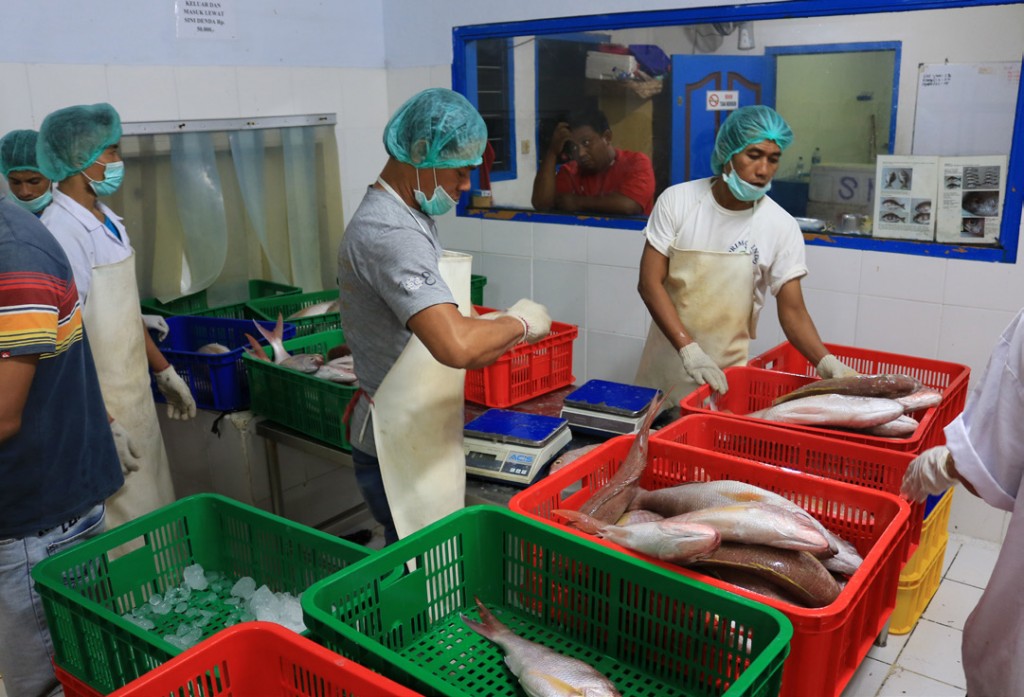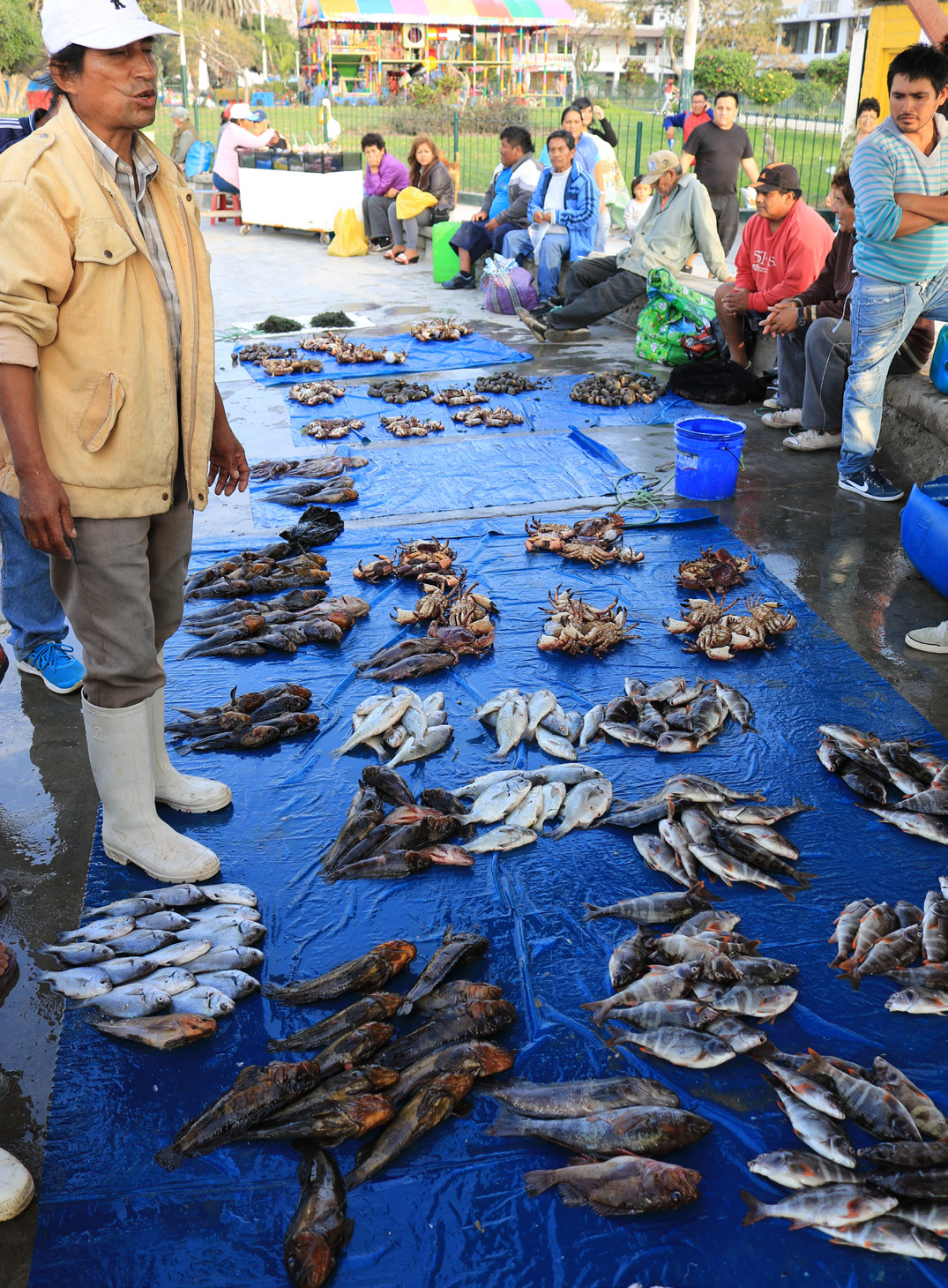Emerging Strategies for Progress
Just as there are some common supply chain challenges that impede sustainable fisheries, so too are there some common ideas and innovations that may help to address those challenges. This list of emerging strategies is not comprehensive, but rather is intended to inspire further thought, discussion, and engagement among practitioners in the field. It is an invitation for the resource management community to help refine and add to these concepts as new pilots are launched, lessons are learned, and new innovations are developed and tested.
Identify who holds the power
As is the case with any group of people, in many supply chains specific players hold disproportionate influence over others. Identifying who those individuals are, and how they could benefit from a conservation-aligned initiative, might be a powerful approach for initiating a shift toward responsible practices. For example, in some fisheries, suppliers are far more than just fish dealers—they provide financing for boats, fuel, and ice; they support fishers by paying for healthcare costs and other unexpected expenses when they arise. Getting buy-in from suppliers around sustainable fisheries initiatives has helped convince fishers to participate, and has built support for several sustainable fisheries-oriented initiatives around the world.
Prove the concept
Industry players are understandably hesitant when it comes to collecting and sharing data. One way to gain trust is to start small, and prove the value of participation by focusing on one player who can serve as a model for others. Peter Mous with TNC Indonesia did this when he teamed up with a single processor in Bali. Working closely with this forward-thinking business leader, his teams have installed technology and new processes on the plant floor, which has increased efficiency and traceability and helped the company improve its branding. At the same time, through careful planning, they have built a data-sharing system that provides TNC with near real-time catch information based on what is moving through the plant—a huge step toward building appropriate fisheries management for this valuable fishery.

Workers in processing plant sort, weight, and measure deepwater snapper and grouper, Indonesia. Photo © Jeremy Rude/TNC
Align with existing cultural values
To say that every supply chain is different appears obvious, but it is critical to explicitly acknowledge the differences that may exist between a fishing community in one region and another just up the coast. In comparing Chilean and Peruvian fisheries, major differences in the way fishers view themselves and their work makes some of the strategies that have worked in Chile, not practical for Peru. Instead, TNC’s Matias Caillaux, in working closely with fishers in the Ancón region, has identified deep local pride as an important value that could serve to unite fishers around a branding campaign.
Provide evidence of progress
Fishers want to see the results of conservation efforts and often cannot afford to wait for long-term ecosystem responses. Providing support for transitions and proof that efforts are, in fact, working, are important elements for participant retention and driving program success. Focusing on changes in fast-response components of the ecosystem is one way to do this. The non-profit Blue Ventures used this approach in encouraging a fishing community off Madagascar to leave a small no-take zone just for octopus. Fast-growing and rapidly reproducing, the octopus population only required five months to show significant returns. Seeing the evidence-based benefits, other communities quickly followed suit.
Enable well-designed alternative livelihoods
In a different approach, Wayan Patut has used coral farming and eco-tourism as a way to grow the economy and income for fishers and reduce destructive fishing practices. Small coral pieces can be sold to the aquarium trade after short time periods, helping generate income for the cooperative as well as provide starters to restore the local reef. Eco-tourism brings divers and snorkelers to view the farms and reefs, further diversifying income. These revenue streams and more consistent supply for aquarium dealers have made it possible for fishers to make a better living, which frees them from the pressure to catch aquarium fish with destructive techniques, and focus on fishing sustainably.
A word of caution here, though: the strategy for developing alternative livelihoods must be thoroughly thought through and designed in close partnership with communities so as to avoid unexpected shifts in effort or practice that can lead to more harm. For example, to reduce fishing effort, the government of the Pacific Island nation of Kiribati subsidized the coconut-oil industry to lure more fishers off the water. The plan worked, and then backfired. Former fishers made more money picking coconuts, and because of this, they didn’t have to work as much. In their newfound leisure-time, they went fishing. Fishing actually increased 33% while reef fish populations plummeted. Approaching innovation with human-centered design approach or an anthropological lens, helps to identify individuals’ motivations and values from the start. These can then be leveraged to construct appropriate, long-lasting initiatives with outcomes in alignment with improved livelihoods and ecosystem health.
Team up
There are many types of partnership structures that can help fishers and supply chain players organize to create positive outcomes for their businesses and the resource. In Chile and Mexico, cooperatives have worked to organize fishers and provide exclusive access to specific fishing areas (TURFs) that they can then manage for maximum returns and long-term sustainability. In Kenya, the BMU model brings in players from up the supply chain to be part of the resource management unit. In the Bahamas, the Bahamas Marine Exporters Association realized that as major beneficiaries of improved lobster harvests, they needed to invest in supporting the fishery improvement project (FIP) efforts. By joining together, they helped create the database management system now used by the government and industry to monitor catch and export of lobsters, as well as supporting several other projects within the FIP including education and outreach campaigns.
Brand the local product
There is a growing trend, from huge commercial fisheries in Alaska to small bays in Peru, to harness the power of a good reputation to create regional brands. For many fisheries, eco-certification is cost prohibitive; however, regional markets may be willing to pay for product that comes from areas that are considered “pure”, “natural,” “well-managed,” or historic hearts of fisheries. Capitalizing on a region’s positive reputation may be one way to open more lucrative market channels for fishers. New technology and forward-thinking seafood companies have opened the door for streamlining the process by which the story of the region and fish can make it to market. A few traceability companies, such as ThisFish, are working with fishers and supply chains to track legal, sustainable product and provide the consumer with access to that story through QR codes on packages. Technology, organization, and creativity are making local branding feasible and affordable for seafood supply chains around the globe.

A fisher’s catch of the day on sale dockside, Peru. Photo © Jeremy Rude/TNC
Let fishers and industry lead
Successful engagement with seafood supply chains must prioritize listening and facilitating over dictating and controlling. Understanding deeply the structure, function, culture, and needs of the players involved is the first step toward developing a range of potential interventions and solutions—all of which must be brainstormed and co-developed with the players themselves. Resource managers must strike the delicate balance of serving as advisor—providing options and evidence that can be used to assess or refine an initiative—while also helping stakeholders take ownership of their ideas. Creating this kind of supportive structure will go a long way in empowering the critical players to take responsibility for their behavior change, and promoting the program to their peers to build long-lasting engagement.
The information in this section was provided by Future of Fish. For more information please contact Future of Fish.
